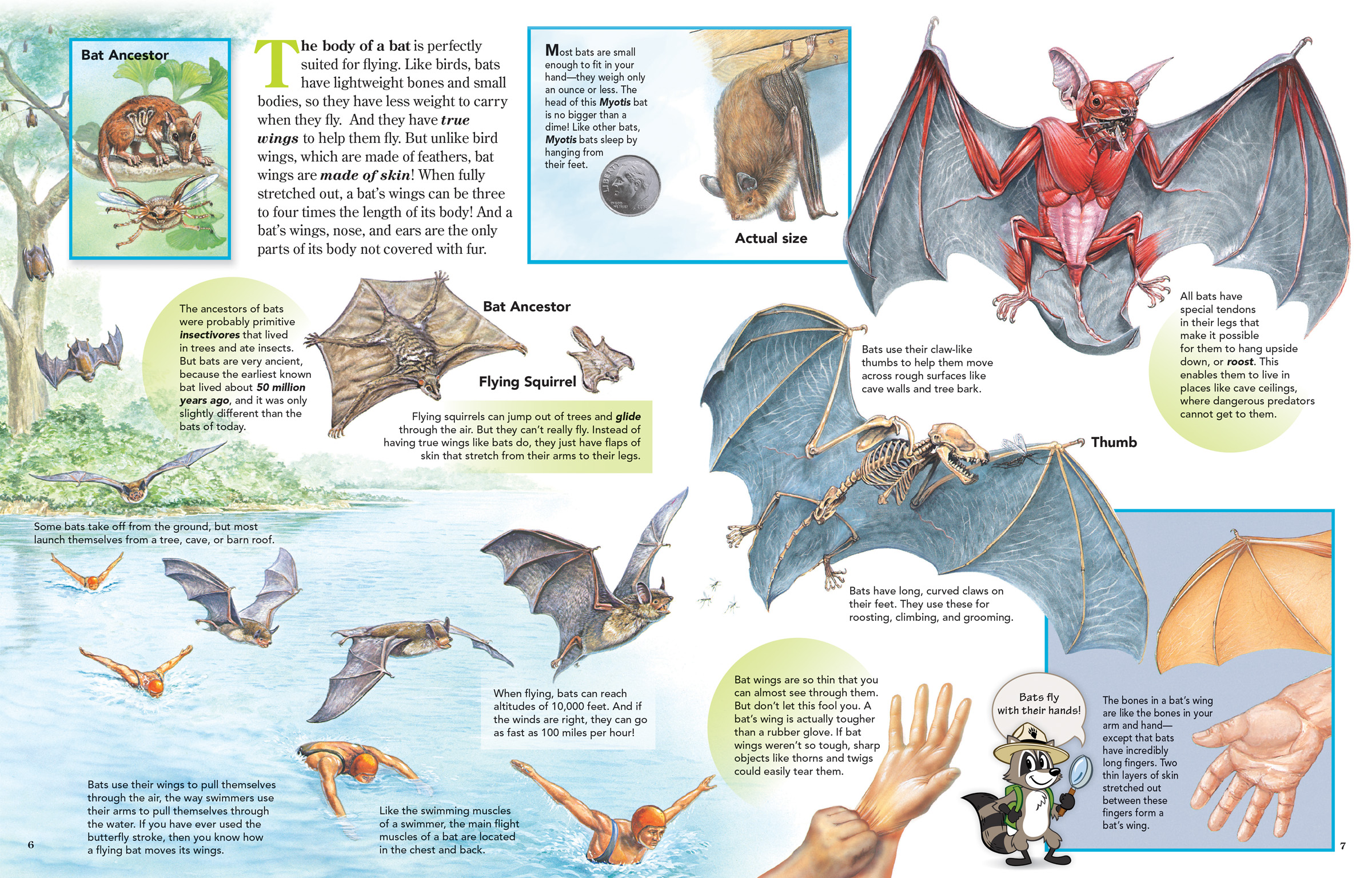
The Body of a Bat is Perfectly Suited for Flying
ByThe body of a bat is perfectly suited for flying. Like birds, bats have lightweight bones and small bodies, so they have less weight to carry when they fly. And they have true wings to help them fly. But unlike bird wings, which are made of feathers, bat wings are made of skin! When fully stretched out, a bat’s wings can be three to four times the length of its body! And a bat’s wings, nose, and ears are the only parts of its body not covered with fur.
Most bats are small enough to fit in your hand—they weigh only an ounce or less. The head of this Myotis bat is no bigger than a dime! Like other bats, Myotis bats sleep by hanging from their feet.
The ancestors of bats were probably primitive insectivores that lived in trees and ate insects. But bats are very ancient, because the earliest known bat lived about 50 million years ago, and it was only slightly different than the bats of today.
Flying squirrels can jump out of trees and glide through the air. But they can’t really fly. Instead of having true wings like bats do, they just have flaps of skin that stretch from their arms to their legs.
Some bats take off from the ground, but most launch themselves from a tree, cave, or barn roof.
Bats use their wings to pull themselves through the air, the way swimmers use their arms to pull themselves through the water. If you have ever used the butterfly stroke, then you know how a flying bat moves its wings.

When flying, bats can reach altitudes of 10,000 feet. And if the winds are right, they can go as fast as 100 miles per hour!
Like the swimming muscles of a swimmer, the main flight muscles of a bat are located in the chest and back.
Bats use their claw-like thumbs to help them move across rough surfaces like cave walls and tree bark.
All bats have special tendons in their legs that make it possible for them to hang upside down, or roost. This enables them to live in places like cave ceilings, where dangerous predators cannot get to them.
Bats have long, curved claws on their feet. They use these for roosting, climbing, and grooming.
Bat wings are so thin that you can almost see through them. But don’t let this fool you. A bat’s wing is actually tougher than a rubber glove. If bat wings weren’t so tough, sharp objects like thorns and twigs could easily tear them.
Bats fly with their hands! The bones in a bat’s wing are like the bones in your arm and hand—except that bats have incredibly long fingers. Two thin layers of skin stretched out between these fingers form a bat’s wing.

